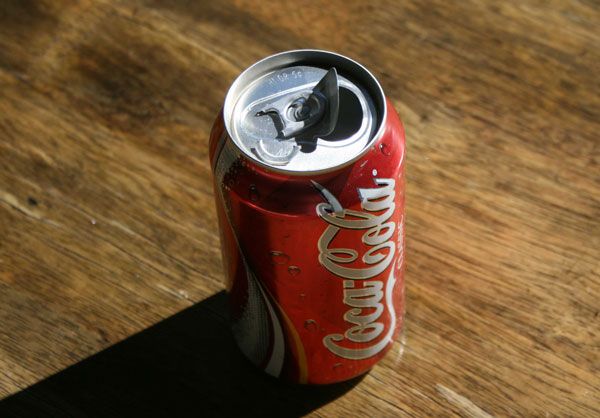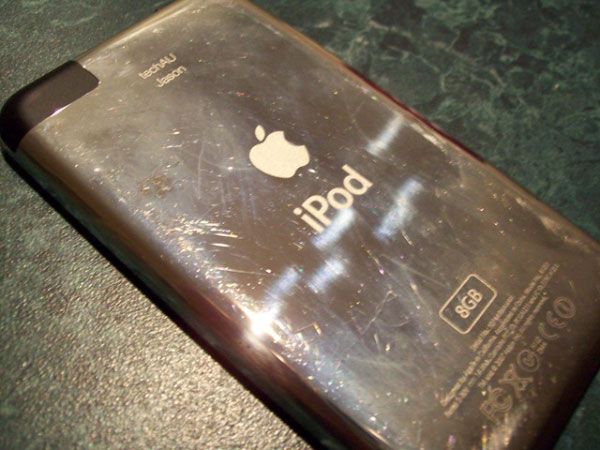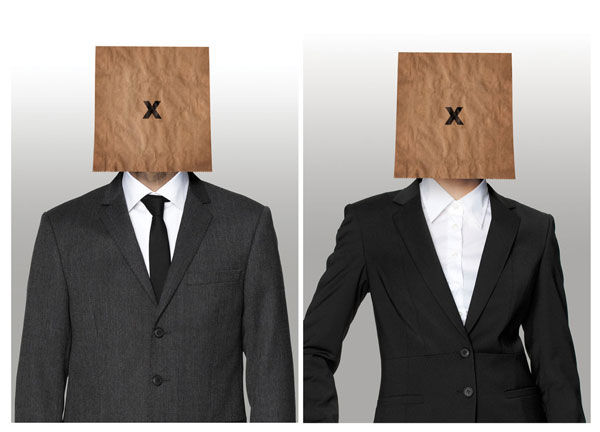The Sustainable Design Lie – Consumerism vs Environmentalism

- Apple iPod Classic Portable Audio Device
- Apple iPod Touch Portable Audio Device
- car design
- cause of obesity
- Conflict
- consumer
- consumer electronics
- designer
- dubious advertising
- durable solid steel toaster
- electronic products
- Embody 3D
- equivalent disposal systems
- food
- food examples
- free online program
- friendly car
- gazelle.com
- greenhouse gas emissions
- industrial design
- industrial designers
- Ipod
- manufacturing
- Martin Gibson
- mobile phones
- obesity
- outdoor equipment
- product designer
- product measures
- recyclable products
- scientist
- society
- steel
- sustainable product design
- transportation energy
- way
Unlike the picture above in this article I am not going to paint consumerism as the embodiment of all evil. In fact consumerism is a very good thing, for without it many of us would have no jobs. We can’t afford 6.5 billion people just making food and constructing houses on this planet. In this article we are going to look into the inertia of business in adopting environmentally responsible product measures. We will investigate societies value of products and how it isn’t a sustainable practice. Finally we will explore how some businesses use sustainable design not as a way of helping the environment but in a way that actually helps destroy it. This article is a real mixed bag of issues and considerations of the sustainable design movement. Please comment I would love know your thoughts!
Article by Martin Gibson – Twitter – 27.03.2010
The Sustainability Conflict
The issue of environmentally sustainable product design challenges the foundation of many thriving product lifecycle models. It really is a conflict of interest for many businesses who have traditionally aimed at giving consumers less and getting them to pay more for it. There is a large drive from these businesses for us to consume more, and consume more quickly so we have to buy their products more regularly. Do you remember what the top of the Coke can looked like 15 years ago? It certainly didn’t have the oval opening we see today. Or what about chip bags which seem to miraculously fill the container with 90% air and 10% chips? This excess packaging is a complete waste and could only be described as dubious advertising. These food examples however can apply across whole industries where industrial designers serve from consumer electronics, outdoor equipment, just about anything.
We really do live in a society of excess, a society of consumerism, which is terrible for the environment and probably the cause of obesity and other types of consumer gluttony. When was this line crossed between living within our means to the product savage consumer of 2010?
Changing Societal Product Values
Although the process of transforming consumers to make responsible decisions might seem counter-intuitive to many business models, but sometimes we need to make tough decisions to benefit wider society. Our expectations and demand for new and exciting products is absurd and unimaginable even 20-30 years ago, and is simply not sustainable. We demand the newest and the best products instantly, they must be well built, beautifully packaged, more powerful and of outstanding quality. But like us products get old, they loose their strength and efficiency and they bare the marks of old age and wear and tear.
Consumers need to understand that a scratch on their Ipod doesn’t warrant the replacement or the repurchase of another Ipod.
We need to champion and value all things old again, and praise their users for being environmentally concerned. These people should not be considered the epitome of lower society for keeping their Ipod Classic, nor should they be viewed as lacking good taste, just environmentally aware.
For generations we have valued antiquities, but because of mass production you just get the impression that modern products aren’t going to be treasured a century from now. But what if we could treasure these products until death do us apart? What if a scratch on a product wasn’t viewed as an imperfection but rather as a trait of old age or a symbol of uniqueness? When a product has an outdated aesthetic what if we treasured it as an artefact of time and place and not disbanded it to landfill? What consumer and designer are you going to be? But of course this whole statement is crazy. Isn’t it?
Systems Approach To Sustainable Design
Of course just asking consumers to buy less and do more with what they have is an unequivocal paradox. A viable alternative is a systems approach to sustainable design. A successful example of this concept is the desktop computer. Some consumers have boxes and motherboards even a decade old, but have replaced and upgraded internal components as necessary and when new technology becomes available. Designing components that can be easily disassembled or upgraded is the best way to extend the life of your product. This process will surely pass on cost savings to consumers as they don’t need to purchase the complete product over and over again. A bad example of this is supermarkets. Every product you purchase whether it is a bottle of coke or shampoo you end up throwing out all the packaging. If one applied a systems approach to this ritual, one would have shoppers return to the supermarket with their empty shampoo bottles and simply refill them. Ludicrous perhaps, sustainable definetely.
Recycling
A better known alternative is just making products that can be easily recycled. But of course it is one thing to design recyclable products and another for consumers to be responsible and discard this waste appropriately. Sometimes out of shear laziness consumers discard this waste into general rubbish and it ends up in landfill. But most of the time there are simply no avenues to dispose some product even though they contain highly recyclable materials. For example sometimes we see recycling systems where you can hand in your old ink cartridges or mobile phones. But what about vacuum cleaners and the other thousands of products that lack equivalent disposal systems?
I found a fantastic website called gazelle.com in which you can sell all your old electronic products to, and if they can’t reuse your products they will recycle all the components. It doesn’t do every product in the world but it’s a start by giving incentives to consumers to be environmentally responsible.
Durability
Increasing the durability of your designs can extend the life of your product, particularly products that don’t suffer from planned obsolescence like a toaster for example. Utilising stronger materials, more durable fasteners and designing stronger geometric forms are great ways to do this. Industrial designers must analyse the limiting factor of a designs durability, as they say a chain is only as strong as its weakest link. For example there is no point designing a super durable solid steel toaster with a body that can withstand a millennia if it has a heater that breaks down after a couple of months. Likewise back onto the Ipod, what’s the point of designing an ipod touch that has a mirror back which is highly susceptible to scratching if users have to constantly get it replaced. Of course it is probably just to please a few girls who like to do their makeup on the bus.
Sustainable Design and Ethical Advertising
By far the most frustrating aspect of sustainable design is watching businesses demand consumers to upgrade to the latest and greatest because their latest rendition is ‘better for the environment’. We see this all the time, whether it is fridges, airconditioning units or cars. But one must look at this practice holistically. Is the practice of a consumer purchasing a brand new ‘environmentally friendly car’ (yes think of all the raw materials, thousands of components and manufacturing and transportation energy) actually result in a benefit or a loss for the environment? As designers we must analyse what stage of the product life cycle does our product have the most environmental impact. For example, is the largest environmental impact of your product design occurring from the raw materials to create the product, the manufacturing, the assembly, the consumer use stage or the end of life stage (recycling, landfill, dissassembly etc.)?
If your product is a lawnmower where the majority of the environmental impact comes from the use stage (fuel consumption for the mower and emissions) then one could easily justify the need for consumers to purchase a whole new lawnmower. However if your product designs largest impact is raw materials like a piece of furniture, then it is completely unethical to demand consumers upgrade their product because the newer model has environmental savings. It is of course absolutely fine to advertise these green credentials to consumers who are looking to purchase their first coffee table or desk.
It takes one hell of a scientist to even know what the largest impact on the environment your product is having, yet alone a product designer. For example how on earth do we really compare what the worst environmental impact of a car design is? What’s worse the steel containing the raw materials of iron and carbon to make up the shell of the car or the greenhouse gas emissions it discards? One can only imagine the complexity that would go into this type of evaluation. Including how much the car is driven, the amount of iron and carbon which is able to be mined from the earths surface and so on. To take the difficulty out of this evaluation I highly recommend a free online program called Greenfly which I have reviewed in a previous post.
It is ok for design firms and marketeers to champion their sustainability initiatives but they must be fair and transparent to consumers. Firms must paint the whole picture so consumers can make informed buying decisions. There is nothing more unethical about greenwashing consumers in one advertisement whilst secretly adding more virginised materials into landfill.







5 Comments
[…] This post was mentioned on Twitter by Embody 3D and Martin Gibson, Martin Gibson. Martin Gibson said: The Sustainable Design Lie – Consumerism vs Environmentalism http://goo.gl/fb/oGEN7 #education #featured #news […]
“We can’t afford 6.5 billion people just making food and constructing houses on this planet.” Please don’t glance over this sentence…ask yourself, ‘Why are there 6.5 billion people and will reducing that number help (possibly be the only solution)?’
<
blockquote>Pillspot.org. Canadian Health&Care.No prescription online pharmacy.Best quality drugs.Special Internet Prices. No prescription pills. Buy drugs online…
Buy:Synthroid.Nexium.Retin-A.100% Pure Okinawan Coral Calcium.Petcam (Metacam) Oral Suspension.Accutane.Actos.Valtrex.Zovirax.Prevacid.Zyban.Human Growth Hormone.Arimidex.Lumigan.Prednisolone.Mega Hoodia….
I am an Environmental Engineering student in Alabama, a place in depserate need for change in areas of sustainability with regards to how we use our recources. The lies from buisnesses about the ‘need’ for the greatest and latest ‘environemntally friendly’ product only helps build buzz on a movement that can help engineer the landscape of tomorrow to be more sustainable on levels beyond simple consumer products. water recources and landfill protocols, offshore drilling satefy procedures, amongst many other issues will not be thought of with the future in mind unless there are alot of people pushing for it. So let the GO Green movement push forward even with the phonies it’s still a good thing to have the idea of sustainability spread.
[…] http://embody3d.com/2010/05/27/the-sustainable-design-lie-consumerism-vs-environmentalism/ […]